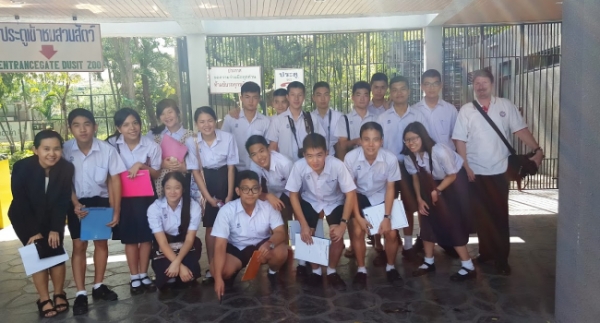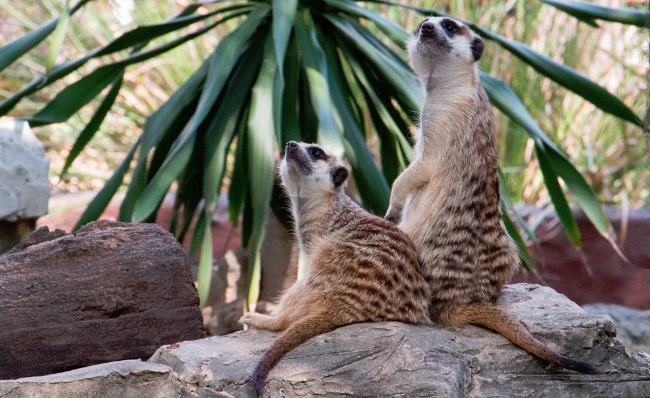
The meerkats are a very popular attraction!
Pre-field trip activities
To maximise educational value and opportunities for learning, it is important that a field trip is not a stand-alone event, but is clearly connected to what students are learning in class, as Marc Behrendt and Teresa Franklin highlight in their excellent review of educational research into school field trips. Thus, prior to our trip to the zoo, I had my students spend several class periods studying different aspects of animal behaviour, so that they already had a sound theoretical base before embarking on the trip to the zoo.
"Prior to the field trip, I had students begin working by practicing making animal observations."
I also had students carry out some pre-trip activities specifically relating to the tasks they would perform once at the zoo. In order to do this I created a Hyperdoc to guide students through a variety of activities. Hyperdocs are interactive Google documents that may contain a variety of links, activities, and exercises. The Hyperdoc I created for this project can be viewed here.
Students worked in small groups throughout this project. Prior to the field trip, I had students begin working by practicing making animal observations, using videos of capuchin monkeys from the Living Links project at Edinburgh Zoo in Scotland. As they studied the monkeys’ behaviour, I had students make notes summarising the different behaviours they observed. They then used these notes to create their own ethograms, which are used to provide quantitative descriptions of an animal's normal behaviour. Once they had practiced using their ethograms, I then had students develop them into data recording sheets, which they would use to conduct their own animal behaviour observations once at the zoo.
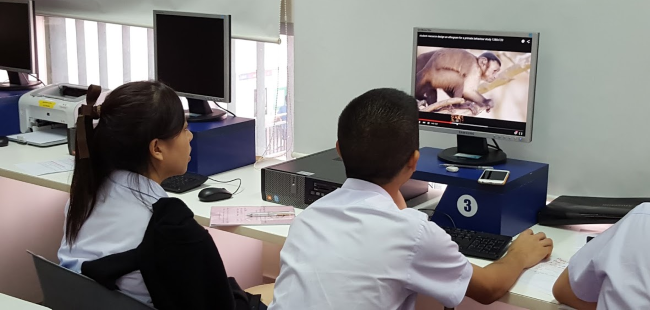
Practicing animal observation.
Behrendt and Franklin’s review also noted the importance of preparing students for what to expect upon reaching the field trip venue, so the second part of the pre-trip activity involved students visiting the zoo’s website, which included a map, so that they could get a good idea of the zoo’s layout. Having prior knowledge of the field trip venue reduces students’ cognitive load on arrival, enabling them to focus on the activity at hand.
The final pre-trip activity involved students exploring the debate around some of the pros and cons of zoos. For example, positive aspects of zoos include ways in which animal enclosures are environmentally enriched, and the role played by zoos in conservation efforts. Conversely, negative aspects of zoos can be seen when animals exhibit abnormal repetitive behaviours.
The field trip
On the day of the trip itself, I asked students to print out their data recording sheets, and provided them with clipboards. We set off after lunch, and following a short twenty-minute coach trip, we arrived at Dusit Zoo. Normally in late November the tropical heat and humidity abates slightly, and the zoo trip is a pleasant experience. This year, the cool season still had not arrived, so it was a very hot afternoon! Armed with their data recording sheets, clipboards, pens and smartphones, the students set off to collect the following data:
- Five-minute ethogram observations of two different animal species.
- Written observations and photos or videos to provide evidence to support positive and negative aspects of zoos (conservation, enrichment, abnormal repetitive behaviours etc).
Hopefully they had some fun and enjoyed the day out too!
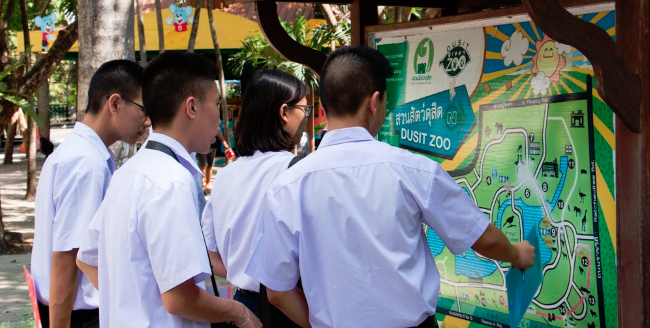
A final check of the map before setting off around the zoo.
Post-trip activities
In addition to pre-field trip activities, in order to maximise learning opportunities it is important to also have post-trip follow-up activities. In this case, I asked the groups to submit written reports based on their ethograms and other observations they made. I also asked students to reflect on what they had learned during the project. A summary of students’ reflections follows.
- A number of students commented that the first-hand, real-life experience they gained from the field trip enhanced their classroom learning, and noted that zoos had significant educational value as sites of learning outside school. As one group wrote: “The field trip emphasised (to) me that the opportunities in education are endless and exist...everywhere, not only in the class.”
- Some students noted that in addition to the knowledge of animal behaviour they gained, they also benefitted from more general skills, such as observation, research, time management, and teamwork.
- Nearly all of the groups commented on the fact that it was difficult to come to a clear conclusion around whether they thought zoos were a good or a bad thing, and that they could see both sides of the argument based on the evidence they had collected.
- Finally, most groups stated that the field trip had been enjoyable and fun, which was good to hear.
A further post-trip activity I had hoped to have students participate in was an asynchronous online debate around the pros and cons of zoos. This would have involved them giving their own opinions, supported by evidence they had gathered at the zoo, as well as additional evidence gained through online research. However, with midterm exams rapidly approaching, lack of time got the better of us, and I reluctantly gave up on holding the debate.
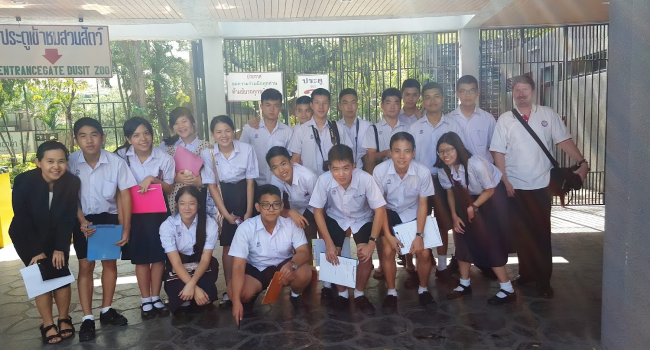
The obligatory group photo.
Overall, I think the project was a success, and provided many more learning opportunities than would have been presented simply by visiting the zoo, without the additional support of the pre- and post-trip activities, and the various technology tools used. I plan to run this field trip in a similar way next time, but I would love to hear others’ views, comments or suggestions.
How do you handle school trips? Let us know below!


